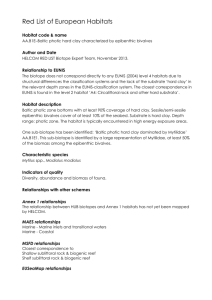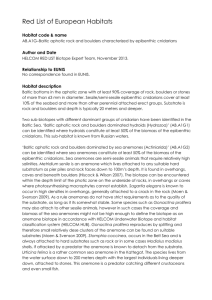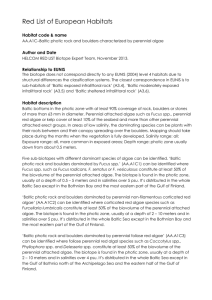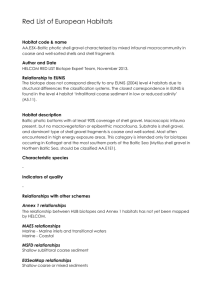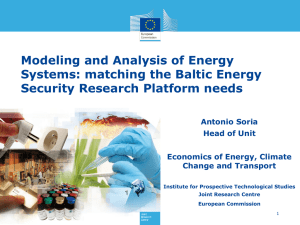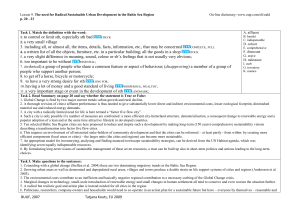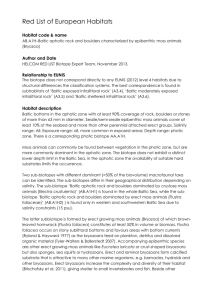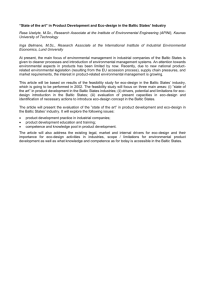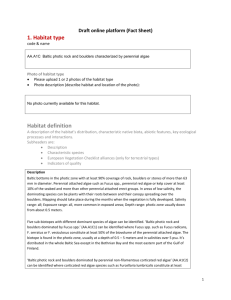Baltic AA.A1E Habitat Definition (example)
advertisement
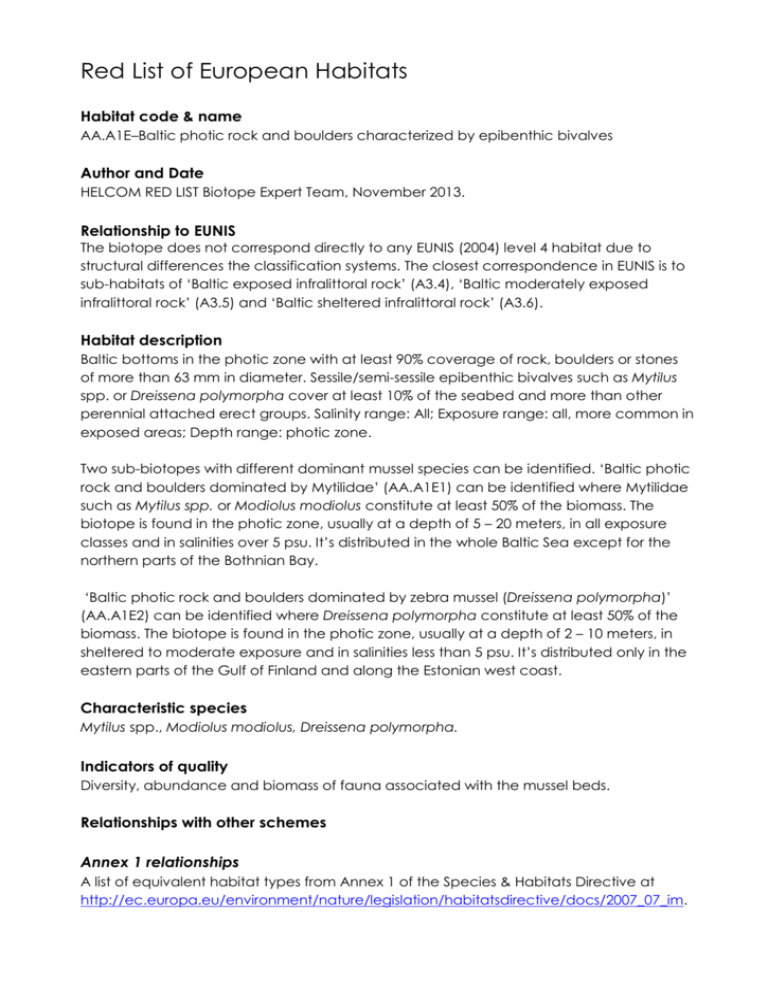
Red List of European Habitats Habitat code & name AA.A1E–Baltic photic rock and boulders characterized by epibenthic bivalves Author and Date HELCOM RED LIST Biotope Expert Team, November 2013. Relationship to EUNIS The biotope does not correspond directly to any EUNIS (2004) level 4 habitat due to structural differences the classification systems. The closest correspondence in EUNIS is to sub-habitats of ‘Baltic exposed infralittoral rock’ (A3.4), ‘Baltic moderately exposed infralittoral rock’ (A3.5) and ‘Baltic sheltered infralittoral rock’ (A3.6). Habitat description Baltic bottoms in the photic zone with at least 90% coverage of rock, boulders or stones of more than 63 mm in diameter. Sessile/semi-sessile epibenthic bivalves such as Mytilus spp. or Dreissena polymorpha cover at least 10% of the seabed and more than other perennial attached erect groups. Salinity range: All; Exposure range: all, more common in exposed areas; Depth range: photic zone. Two sub-biotopes with different dominant mussel species can be identified. ‘Baltic photic rock and boulders dominated by Mytilidae’ (AA.A1E1) can be identified where Mytilidae such as Mytilus spp. or Modiolus modiolus constitute at least 50% of the biomass. The biotope is found in the photic zone, usually at a depth of 5 – 20 meters, in all exposure classes and in salinities over 5 psu. It’s distributed in the whole Baltic Sea except for the northern parts of the Bothnian Bay. ‘Baltic photic rock and boulders dominated by zebra mussel (Dreissena polymorpha)’ (AA.A1E2) can be identified where Dreissena polymorpha constitute at least 50% of the biomass. The biotope is found in the photic zone, usually at a depth of 2 – 10 meters, in sheltered to moderate exposure and in salinities less than 5 psu. It’s distributed only in the eastern parts of the Gulf of Finland and along the Estonian west coast. Characteristic species Mytilus spp., Modiolus modiolus, Dreissena polymorpha. Indicators of quality Diversity, abundance and biomass of fauna associated with the mussel beds. Relationships with other schemes Annex 1 relationships A list of equivalent habitat types from Annex 1 of the Species & Habitats Directive at http://ec.europa.eu/environment/nature/legislation/habitatsdirective/docs/2007_07_im. MAES relationships Marine - Marine inlets and transitional waters Marine – Coastal MSFD relationships A list of equivalent MSFD Predominant habitat types http://biodiversity.europa.eu/maes/crosswalks-between-european-marine-habitattypologies_10-04-14_v3.pdf EUSeaMap relationships A list of the equivalent EUSeaMap categories http://biodiversity.europa.eu/maes/crosswalks-between-european-marine-habitattypologies_10-04-14_v3.pdf IUCN ecosystem relationships A list of equivalent habitat types from http://www.iucnredlist.org/documents/Dec_2012_Guidance_Habitats_Classification_Sch eme.pdf Other relationships Level 5 of the HELCOM HUB classification (2013). This habitat has two sub-habitats on HUB level 6; ‘Baltic photic rock and boulders dominated by Mytilidae’ (AA.A1E1) and ‘Baltic photic rock and boulders dominated by zebra mussel (Dreissena polymorpha)’(AA.A1E2). Photograph - Countries list To be inserted when data sheets completed. Regional Sea Baltic Sea Baltic Proper Belt Sea Gulf of Bothnia Gulf of Finland Gulf of Riga The Sound Map This will be inserted by NatureBureau based on the Regional Sea information above. References -
